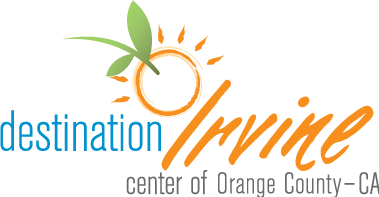Panel to Paint the Great Park Green
Design Studio to Discuss Sustainability through Public/Private Partnerships at “What’s Orange, Gold and Green All Over?” Conference
NOVEMBER 8, 2006 – IRVINE, California – The “What’s Orange, Gold and Green All Over? - Developing a sustainable vision for the 21st Century OC” conference will highlight the commitment of the Orange County Great Park Design Team to the sustainability movement on Thursday, February 9th from 8:30 a.m. to 1:30 p.m. at the Ford Motor Company, One Premier Place in Irvine. Sustainability permeates every aspect of the Great Park’s design. It is about improving the quality of life for individuals, strengthening communities, and making the world a healthier place. It inspires visitors to rethink their connections to nature, to history, and to their community. It generates and demonstrates new ideas and technologies, inspiring people to make changes in their own lives.
“Sustainability means using the rich materials that already exist at the former El Toro Marine Corps Air Base for their re-use and showcasing them to build the Great Park,” said Richard Ramsey, Chief of Staff to the Great Park Design Team. “The former base has existing resources that are far too beautiful to bypass. We plan to build bridges with the redwood now built into in the military hangars, we will recycle the concrete on the runways to build the veterans memorial and roadways, we will clean existing water to send back into the community and be energy efficient.”
Sustainable Infrastructure
The Park will feature sustainable principals within the Master Plan programming. Several green infrastructure components are currently being considered.
- Large rainfall impoundments and groundwater recharge areas within the Agua Chinon and Wildlife Corridor.
- Numerous local infiltration zones for urban runoff to recapture excess flow into the groundwater aquifer.
- Recycling of landscape waste into mulch and compost for reuse on-site.
- Green street designs, such as porous travelways; dark sky lighting; traffic calming; pervious trails and parkways; tree canopy grouping along roads for shade; low reflective and colored pavements; underground irrigation; and structured soil placement to promote aeration/infiltration while confining roots.
This eco-adaptive approach to engineered systems will enable the Park to become more self-sustaining and be a model for others to follow.
The Great Park will feature sustainable principles within the Master Plan programming. They include:
Restored Habitat
Ecologically complex restored native habitats are found in three major sections of the park—the Wildlife Corridor, Agua Chinon, and the Canyon. Native plant communities are found in other areas as well, including the Botanic Garden. These habitats will need only modest management.
The Wildlife Corridor, off limits to the general public, is reserved for animal movement from the mountains to the sea. Agua Chinon also links preserves north to south, but it is crisscrossed by paths so that visitors can enjoy this natural area. Among the palm trees and other plantings in the Canyon are a variety of critical habitats, such as vernal pools that support amphibians, specialized plants, and other species that require standing water in the spring.
Renewable Energy Generation
The Great Park is examining the potential of installing over 1 MegaWatts of renewable energy generation on-site through a variety of technologies. Throughout the park, site lighting will have small photovoltaic cells attached to the lamp posts that will charge small batteries to power lights at night. A small hydrogen fuel cell demonstration is also being considered.
The Park is also examining a plan to install over one acre of photovoltaics covering the roof areas of the Living Laboratory hangars and could generate over 400kW at peak output. The Park in also considering 15 solar collectors with mirror dishes with a diameter of over 30 feet and the capacity to generate an additional 500kW at peak output. Over 40 acres of switch grass or other biomass crops could also be grown for use in an anaero.
Water Quality
The Park’s obligation to future generations is to keep water clean for their future use. To this end, the Park will have an array of natural treatment systems (NTS) implemented in a three-stage treatment process. All areas developed with buildings, roads, and other facilities will attempt to integrate Best Management Practices, such as porous pavement, structural infiltration devices, and litter and debris entrapment vaults. This comprises Stage One. Surrounding these facilities will be bio-swales and infiltration/exfiltration media integrated into landscaping zones. This is Stage Two. Finally, after run-off has coursed through these stages, it is captured downstream in treatment wetlands that add vegetative uptake and solar exposure. Monitoring and maintenance will be facilitated by locating the NTS next to roads, trails, and access ways. Locations will be selected in collaboration with the Irvine Ranch Water District to ensure proper operation and maintenance.
These ideas and technologies are generated in the park, but they will have a profound impact far beyond the park’s boundaries.
The Orange County Great Park, which is almost twice the size as Central Park, will be a major metropolitan park and the focal point of redevelopment of the 4,700-acre former Marine Corps Air Station at El Toro. The Great Park will include extensive natural areas and open space in addition to recreational and cultural uses.
For more information, go to www.ocgp.org.
Press Contacts:
Maryann Maloney
(949) 375-0856








